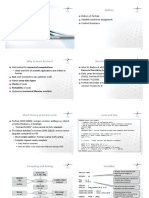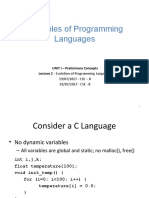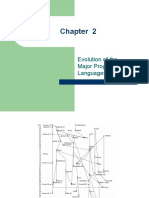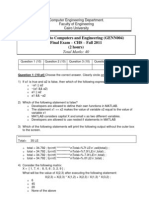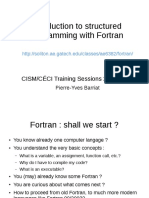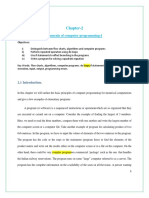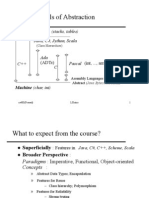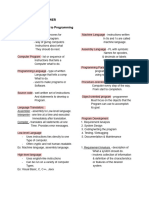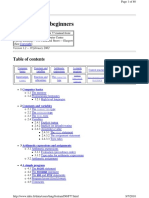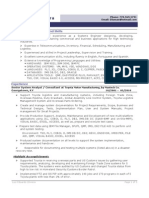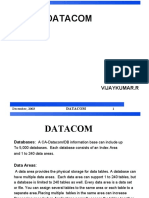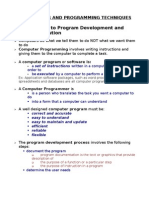0% found this document useful (0 votes)
17 views70 pagesChapter 02 Evolution of Major Programming Languages
The document discusses the evolution of programming languages, highlighting the limitations of machine code and the development of higher-level languages like MIPS, Fortran, LISP, and ALGOL. It covers the features and historical context of these languages, including their syntax, data handling, and impact on programming practices. Additionally, it emphasizes the significance of COBOL in business applications and the importance of making programming more accessible.
Uploaded by
nomanur rahmanCopyright
© © All Rights Reserved
We take content rights seriously. If you suspect this is your content, claim it here.
Available Formats
Download as PPT, PDF, TXT or read online on Scribd
0% found this document useful (0 votes)
17 views70 pagesChapter 02 Evolution of Major Programming Languages
The document discusses the evolution of programming languages, highlighting the limitations of machine code and the development of higher-level languages like MIPS, Fortran, LISP, and ALGOL. It covers the features and historical context of these languages, including their syntax, data handling, and impact on programming practices. Additionally, it emphasizes the significance of COBOL in business applications and the importance of making programming more accessible.
Uploaded by
nomanur rahmanCopyright
© © All Rights Reserved
We take content rights seriously. If you suspect this is your content, claim it here.
Available Formats
Download as PPT, PDF, TXT or read online on Scribd
/ 70

